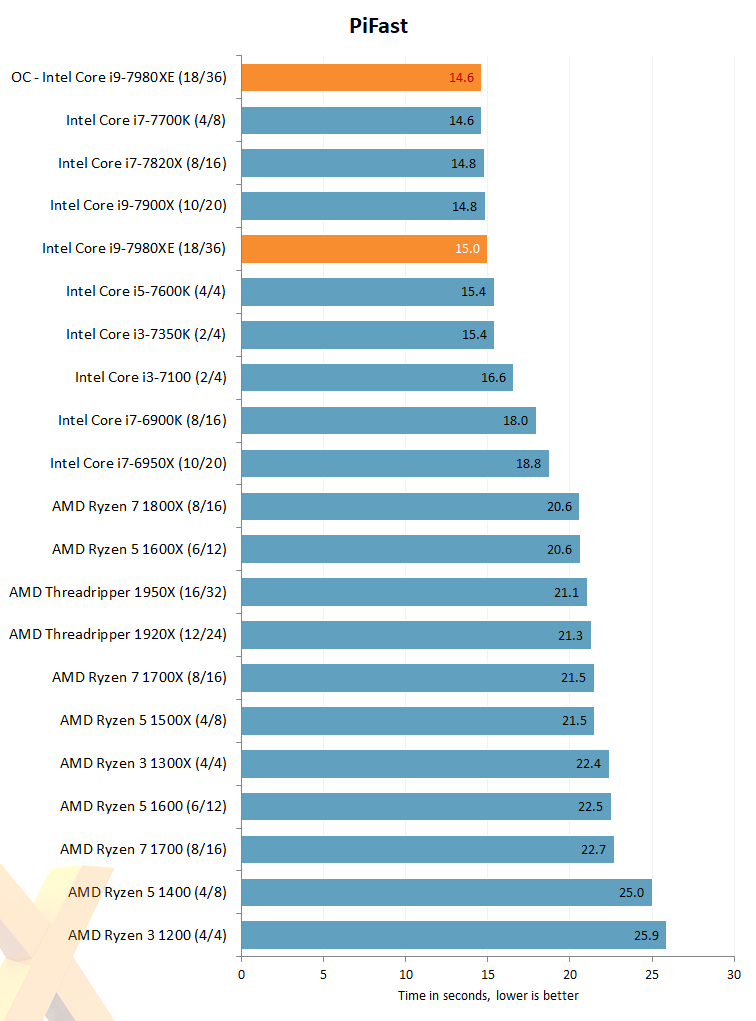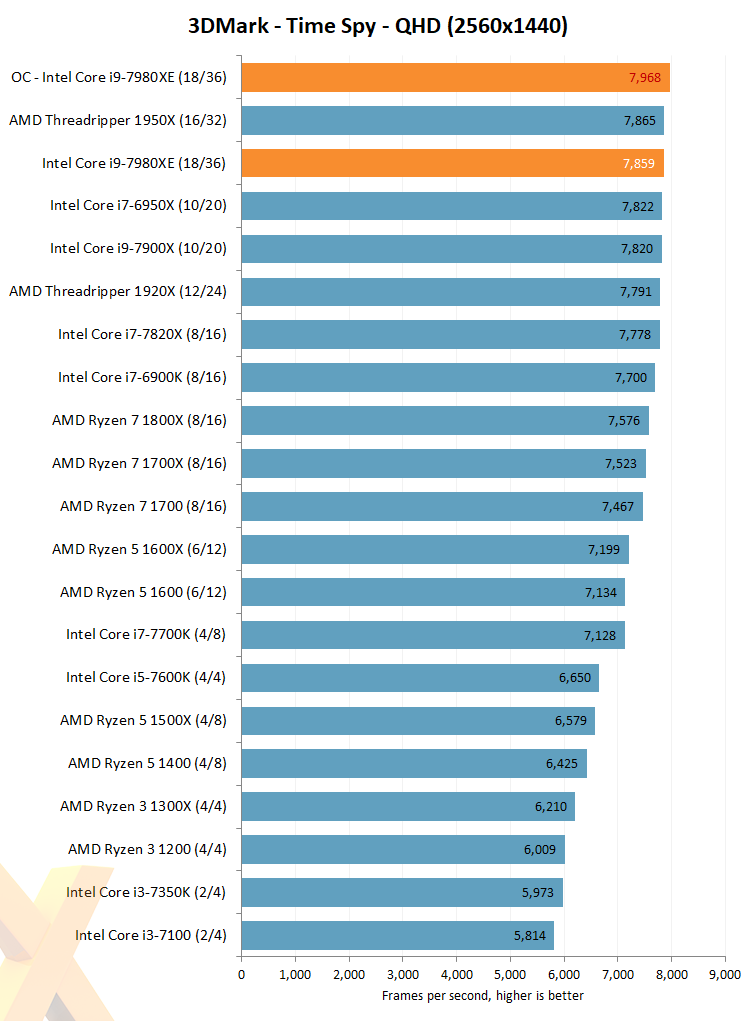Overclocking
Having 18 cores on tap means that increasing voltage causes power consumption to quickly spiral out of hand. After some trial and error we found that the chip became incredibly thirsty if voltage was increased to 1.2V. Appreciating that we're using air cooling we took a balanced approach to frequency and voltage. All told, we were able to run the chip at an all-core 4.5GHz using 1.17V in the BIOS.
This combination was at the very edge of what the Noctua cooler could handle without causing the chip to throttle under demanding workloads. To give you an idea of the at-wall system wattage, the default configuration consumed 233W when running Cinebench. The overclocked chip pulled an average 488W on the same test, suggesting that premium power delivery will make a genuine difference in your overclocking ability.
We've been in touch with leading system builders who have seen the same phenomenon. The Asus X299-A Prime is decent enough, of course, yet they say that switching over to the Deluxe offers more stability at the bleeding edge.
So what does an all-core 4.5GHz give you when rampaging on 18 cores and 36 threads?



Single-threaded performance doesn't go up much, as expected, but Holy Smokes, Batman, the 32 per cent increase in all-core frequency translates to a linear increase in Cinebench performance. Naturally, it hammers everything else out of sight.
That said, having lots of high-speed cores doesn't do a great deal for gaming.










